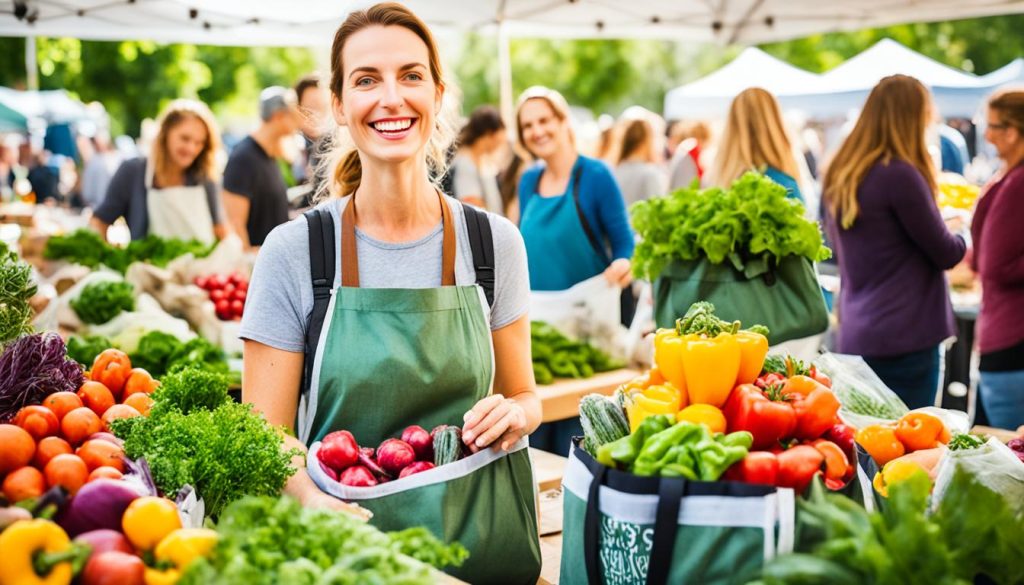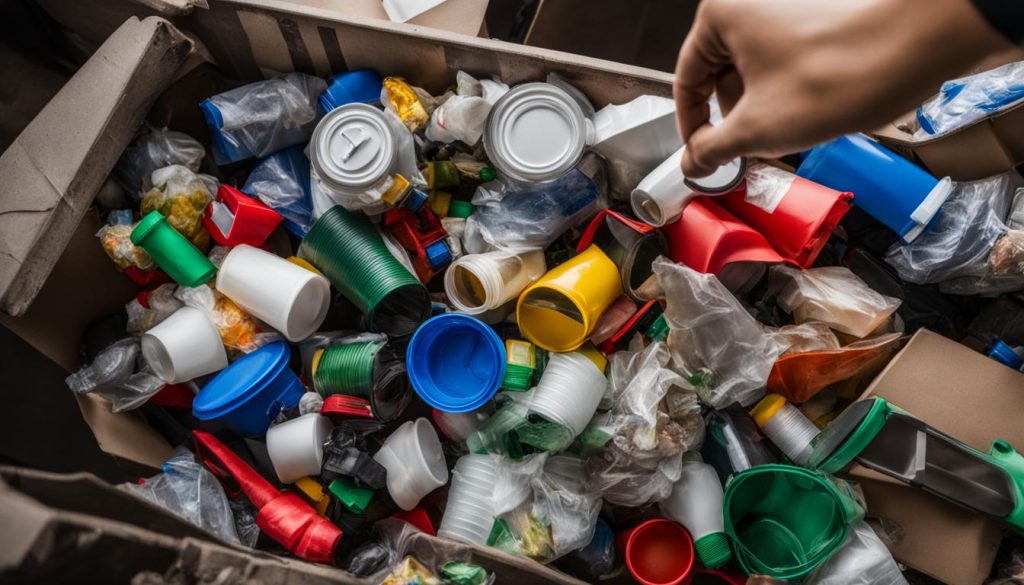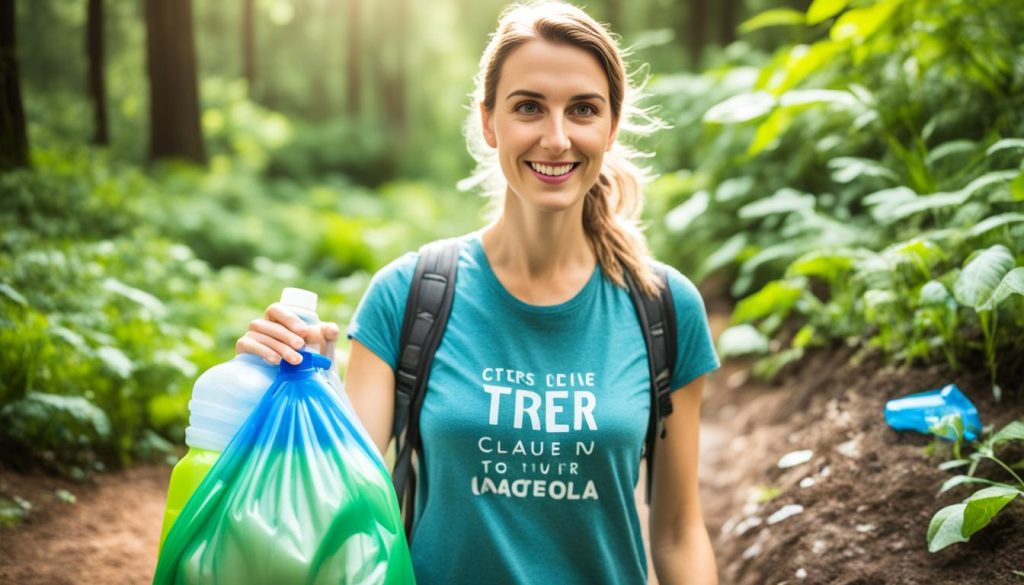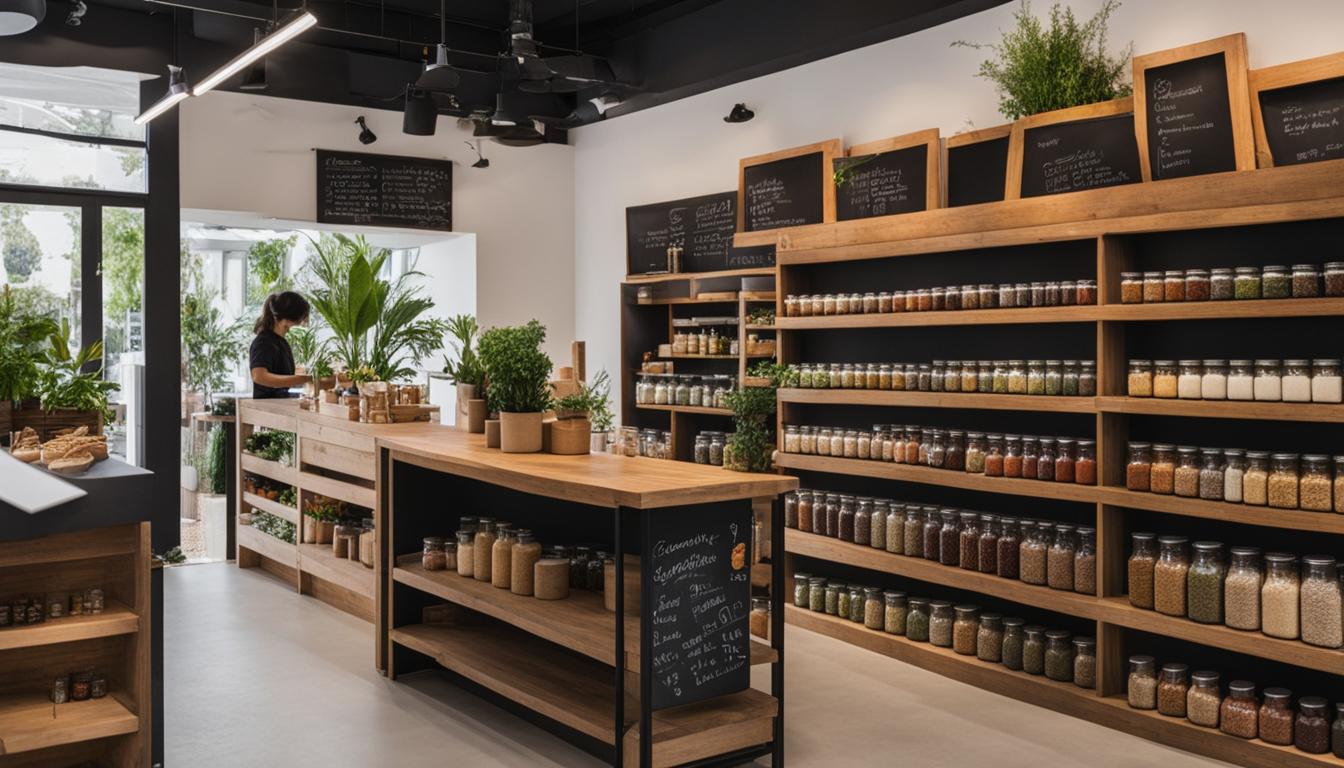Starting a zero waste shop is a great way to contribute to sustainable living and reduce plastic waste. By following these steps, you can kickstart your own environmentally friendly store.
Are you passionate about promoting sustainable consumption and reducing waste? Opening a zero waste shop can be a rewarding venture that aligns with your values and makes a positive impact on the environment. A zero waste shop, also known as a sustainable living store, eco-friendly shop, or plastic-free store, offers a wide range of products that help customers embrace a zero waste lifestyle.
What is Zero Waste?
Zero waste is a philosophy that aims to eliminate waste generation and send zero waste to landfills or incinerators. It involves rethinking our consumption habits and finding ways to reduce, reuse, and recycle. Adopting a zero waste lifestyle can save you money, simplify your life, and help conserve natural resources.
When we talk about zero waste, we’re not just talking about a trend or a temporary solution. It’s a holistic approach to sustainable living that promotes a fundamental shift in how we view and interact with waste. It’s about embracing a philosophy that challenges the status quo and propels us towards a more environmentally conscious society.
The core principle of zero waste is simple: reduce the amount of waste we produce. This means making a conscious effort to rethink our consumption patterns, making choices that prioritise durability and longevity, as well as considering the entire lifecycle of the products we use. By focusing on the three R’s – reduce, reuse, recycle – we can significantly reduce our environmental footprint.

Reducing waste begins with being mindful of our purchases and avoiding excessive consumption. Instead of buying single-use or disposable items, opt for reusable alternatives that are made to last. By doing so, we can reduce the amount of waste we generate and prevent discarded items from ending up in landfills.
Embracing the concept of reuse is another crucial aspect of zero waste. Instead of discarding items that might still serve a purpose, look for creative ways to give them a second life. From repurposing old jars as storage containers to upcycling worn-out clothing into new accessories, the possibilities for reusing items are endless.
Of course, recycling remains an essential part of the zero waste movement. By understanding what can and cannot be recycled in your area and properly sorting your recyclables, you can help divert waste from landfills and conserve valuable resources.
Adopting a zero waste mindset not only benefits the environment but also has personal advantages. By reducing waste and embracing a more conscious approach to consumption, you can save money and simplify your life. By focusing on quality over quantity and avoiding unnecessary purchases, you can free up your finances and create a more meaningful and fulfilling lifestyle.
So, whether it’s by making small changes in our daily habits or advocating for systemic changes, embracing the philosophy of zero waste allows us to be part of the solution and contribute to a more sustainable future.
How to Start a Zero Waste Shop?
Assessing Your Current Waste
The first step in starting a zero waste journey is to assess your current waste habits. By conducting a waste audit, you can gain valuable insights into what you’re throwing away and identify areas for improvement. This process will help you set realistic goals and create a plan for reducing waste in your everyday life.
Conducting a Waste Audit
A waste audit involves carefully examining the different types of waste that you generate. Here’s how you can conduct a waste audit at home:
- Designate a specific period (e.g., one week) to perform the waste audit.
- Collect all your waste in separate containers and categorize them into different waste streams (e.g., food waste, packaging waste, paper waste).
- Weigh each waste stream to quantify the amount of waste being generated. This will help you get a clear picture of your waste habits.
- Take note of any patterns or common items that contribute significantly to your waste output.
By carefully assessing your waste habits through a waste audit, you can identify areas where changes can be made to reduce waste and improve sustainability.
Identifying Areas for Improvement
After completing your waste audit, it’s time to analyze the data and identify areas for improvement. Look for opportunities to reduce waste in the following areas:
- Food waste: Evaluate your food consumption patterns and find ways to minimize food waste. Consider composting food scraps and meal planning to avoid overbuying.
- Single-use items: Assess the amount of single-use items, such as plastic bags, straws, and disposable cutlery, that you use in your daily life. Look for reusable alternatives.
- Packaging waste: Pay attention to excessive packaging when making purchases. Opt for products with minimal packaging or choose to buy in bulk.
- Energy consumption: Assess your household energy usage and identify ways to reduce energy waste. Replace old appliances with energy-efficient models and implement energy-saving practices.
By understanding where your waste comes from and identifying areas for improvement, you can develop a tailored plan to reduce waste and live a more eco-friendly lifestyle.

Remember, the key to successfully reducing waste is taking small steps and making gradual changes. Celebrate every improvement and inspire others to join you on the zero waste journey!
Reducing Waste Through Swaps
One of the most effective ways to reduce waste is by eliminating single-use items and embracing reusable alternatives. By making simple swaps in our everyday lives, we can make a significant impact on reducing plastic waste and promoting sustainable consumption.
Swap out Single-Use Items for Reusable Alternatives
Instead of relying on plastic bags, straws, and water bottles that are used once and thrown away, opt for reusable alternatives. Invest in sturdy and stylish reusable shopping bags to carry your groceries, choose stainless steel or bamboo straws for your beverages, and carry a reusable water bottle to quench your thirst on the go. These small changes can make a big difference in reducing single-use plastic waste.
Choose Products with Minimal Packaging
Minimizing packaging waste is another crucial step in reducing our environmental footprint. When shopping, look for products with minimal packaging or choose items that come in recyclable or compostable packaging. By consciously selecting products with less packaging, we can help reduce the amount of waste that ends up in landfills or incinerators.
Support Local Businesses with Environmental Responsibility
Conscious shopping goes beyond choosing the right products. It’s also about supporting local businesses that prioritize environmental responsibility. Seek out eco-friendly stores that offer sustainable alternatives and minimal packaging options. By supporting these businesses, we can encourage the shift towards a more sustainable and waste-free economy.
Reducing waste through swaps not only benefits the environment but also improves our quality of life. By embracing reusable alternatives, choosing products with minimal packaging, and supporting local businesses, we can actively contribute to a greener future.

Proper Composting and Recycling
Composting and recycling are essential components of a zero waste lifestyle. By diverting waste from landfills, we can conserve resources and contribute to a more sustainable future. In this section, we will explore the importance of composting and recycling, and how you can effectively incorporate these practices into your daily life.
Composting for Nutrient-Rich Soil
Composting is the process of decomposing organic materials such as food waste and yard trimmings to create nutrient-rich soil. By composting, you can harness the power of nature to recycle organic matter and reduce methane emissions from landfills. It’s a simple and effective way to turn waste into a valuable resource.
When composting, it’s important to follow proper guidelines to avoid contamination and ensure a successful composting process. Here are a few key tips:
- Use a bin or designated composting area to contain the organic materials.
- Balance “green” (nitrogen-rich) and “brown” (carbon-rich) materials for optimal decomposition.
- Aerate the compost regularly to provide oxygen for the microorganisms breaking down the waste.
- Avoid adding meat, dairy, and oily foods, as they can attract pests or slow down the composting process.
By composting your food waste and organic materials, you not only reduce the amount of waste sent to landfills but also create nutrient-rich soil that can be used in your garden or shared with others in your community.
Recycling for Resource Conservation
Recycling is another valuable step towards diverting waste and conserving resources. By recycling materials like paper, glass, plastic, and metal, we can reduce the need for extracting and manufacturing new materials, saving energy and reducing greenhouse gas emissions.
To effectively recycle, it’s important to understand your local recycling facilities and guidelines. Different materials may have specific requirements for recycling, so educating yourself on what can and cannot be recycled is crucial. Here are a few general tips for recycling:
- Sort and clean recyclable materials before placing them in the recycling bin.
- Check labels for recycling symbols to determine if an item is recyclable.
- Remove lids and caps from bottles and containers before recycling.
- Support recycling programs and initiatives in your community.
Recycling is an effective way to conserve resources, reduce waste, and promote a circular economy. By choosing to recycle, you become an active participant in creating a more sustainable future.

By incorporating proper composting and recycling practices into your daily life, you can make a significant impact in reducing waste and conserving resources. Composting helps create nutrient-rich soil and reduces methane emissions from landfills, while recycling conserves valuable resources and reduces the need for extraction and production of new materials. Together, these practices contribute to a greener and more sustainable future.
Celebrating Your Zero Waste Achievements
Embarking on a zero waste journey is commendable and should be celebrated. It’s not always easy to break old habits and embrace a more sustainable lifestyle, but every small change counts. Whether you’re reducing food waste, reusing items creatively, or supporting local businesses, each step you take makes a positive impact on the environment.
Sharing your achievements with others can be a powerful way to inspire them to make changes in their own lives. By discussing your journey and the challenges you’ve overcome, you can motivate others to join the zero waste movement. Together, we can create a cleaner and greener future.
Remember, celebrating your achievements doesn’t mean boasting about your efforts. Instead, it’s about fostering a sense of community and camaraderie. Engage in conversations, participate in zero waste events or workshops, and connect with like-minded individuals. By sharing your experiences and knowledge, you have the opportunity to inspire and educate others on the importance of reducing waste and living sustainably.





